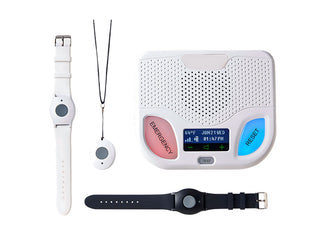Technology Simplified
Exploring the Wide Range of Hearing Aids for Senior Citizens

Hearing loss is a prevalent age-related condition that affects countless senior citizens globally. Fortunately, technological advancements have led to the development of a wide array of hearing aids that can significantly improve the quality of life for individuals with hearing impairments. In this comprehensive article, we will delve into the various types of hearing aids available for senior citizens, discussing their features, benefits, and considerations. By gaining a deeper understanding of the options at hand, seniors can make informed decisions to enhance their auditory experience and regain their connection to the world around them.
Shop Lucid Hearing's assortment of over the counter hearing aids and accessories.Behind-the-Ear (BTE) Hearing Aids
- Amplification Power: BTE aids can accommodate higher amplification levels, making them suitable for severe hearing loss where stronger amplification is required.
- Enhanced Durability: The larger size of BTE aids allows for the integration of more robust technology, resulting in longer battery life and improved durability.
- Easy Handling and Maintenance: Their design makes BTE aids easier to handle and clean, reducing the risk of damage or malfunction.
In-the-Ear (ITE) Hearing Aids
- Cosmetic Appeal: ITE aids are less noticeable since they fit snugly in the ear canal, making them suitable for those concerned about the visibility of their hearing aids.
- Ease of Use: The larger size of ITE aids allows for easy handling, especially for seniors with dexterity issues.
- Improved Sound Quality: Their placement in the ear canal helps to capture sound more naturally, providing better sound quality and reducing background noise.
Receiver-in-Canal (RIC) and Receiver-in-the-Ear (RITE) Hearing Aids
- Comfort and Discretion: The slim wire and small size of the receiver make RIC and RITE aids less visible and more comfortable to wear.
- Natural Sound Quality: Placing the receiver closer to the eardrum allows for better sound localization and a more natural sound perception.
- Improved Feedback Reduction: The separation of the microphone and receiver reduces the occurrence of feedback or whistling sounds.
Completely-in-the-Canal (CIC) and Invisible-in-the-Canal (IIC) Hearing Aids
For seniors seeking the utmost discretion, completely-in-the-canal (CIC) and invisible-in-the-canal (IIC) hearing aids are excellent options. These aids are custom-made to fit deep within the ear canal, making them virtually invisible to others. Key benefits of CIC and IIC aids include:
- Cosmetic Appeal: These aids offer the highest level of discretion, as they are hidden deep within the ear canal.
- Reduced Wind Noise: The positioning of CIC and IIC aids within the ear canal helps to minimize wind noise during outdoor activities.
- Natural Sound Perception: The proximity to the eardrum allows for a more natural sound perception, similar to unassisted hearing.
Bone Conduction Hearing Aids
- Suitable for Certain Types of Hearing Loss: Bone conduction aids can be effective for individuals with conductive hearing loss, single-sided deafness, or issues with the outer or middle ear.
- Enhanced Comfort: Since bone conduction aids do not block the ear canal, they offer a more comfortable and natural wearing experience.
- Improved Sound Clarity: By bypassing the damaged parts of the ear, bone conduction aids can provide clearer sound perception.
Considerations for Choosing Hearing Aids
When selecting hearing aids, there are several important factors to consider:
- Degree and Type of Hearing Loss: The severity and type of hearing loss will influence the most appropriate type of hearing aid for an individual.
- Lifestyle and Preferences: Consider lifestyle factors such as social activities, hobbies, and personal preferences when choosing the style and features of hearing aids.
- Technology Features: Hearing aids offer a variety of features such as noise reduction, directional microphones, Bluetooth connectivity, and rechargeable batteries. Assess the importance of these features based on individual needs and preferences.
- Budget: Hearing aids come in various price ranges. It is essential to set a budget and explore options that provide the desired features within that range.
- Consultation and Fitting: Seek professional guidance from an audiologist or hearing specialist to undergo a thorough evaluation, receive recommendations, and ensure the proper fitting and adjustment of the chosen hearing aids.
Hearing loss should not limit the enjoyment of life's sounds and connections, especially for senior citizens. The array of hearing aids available today offers a variety of options to suit different types and degrees of hearing loss, personal preferences, and budgets. From behind-the-ear to completely-in-the-canal options, seniors can choose the most suitable hearing aids to enhance their auditory experience and regain their ability to communicate and engage with the world around them. By considering the various types and features of hearing aids and seeking professional advice, seniors can embrace the benefits of improved hearing and enjoy a fuller and more connected life.







